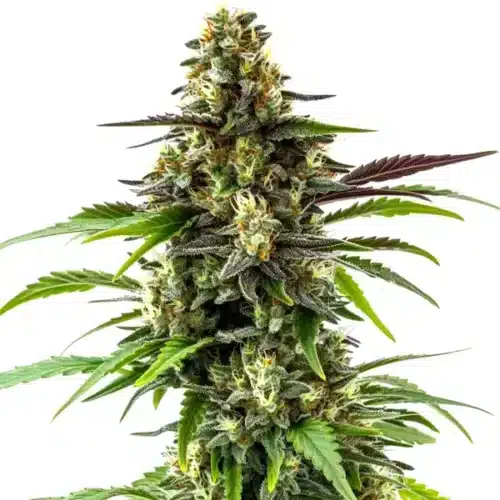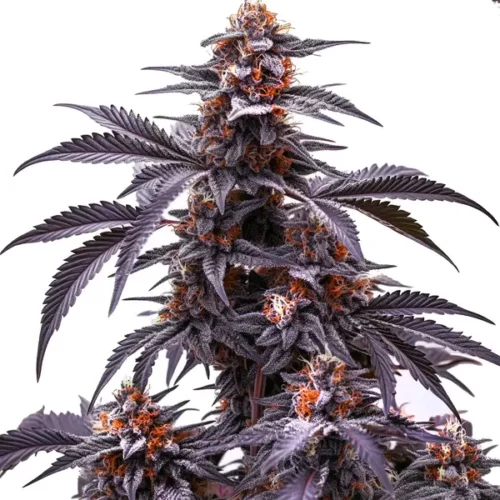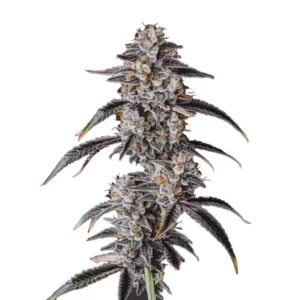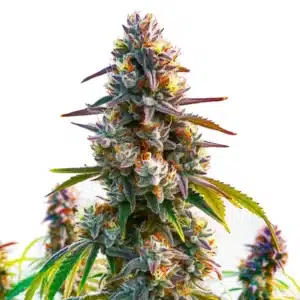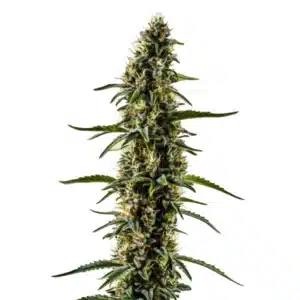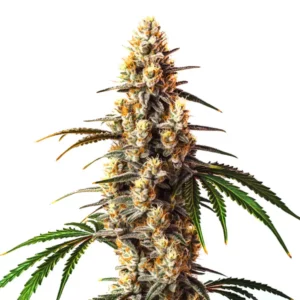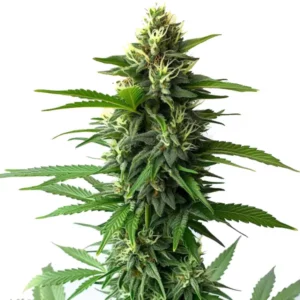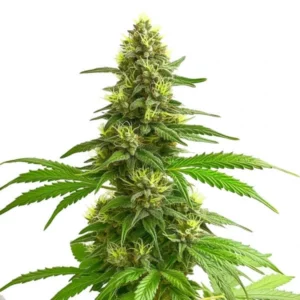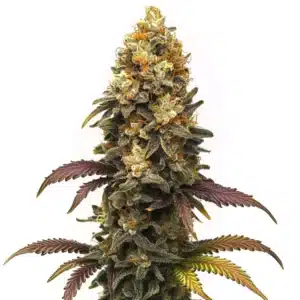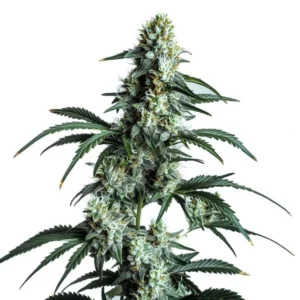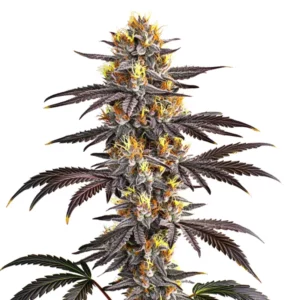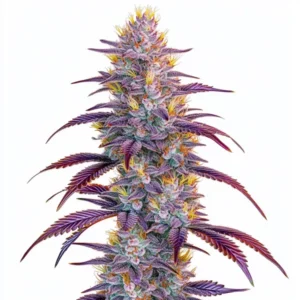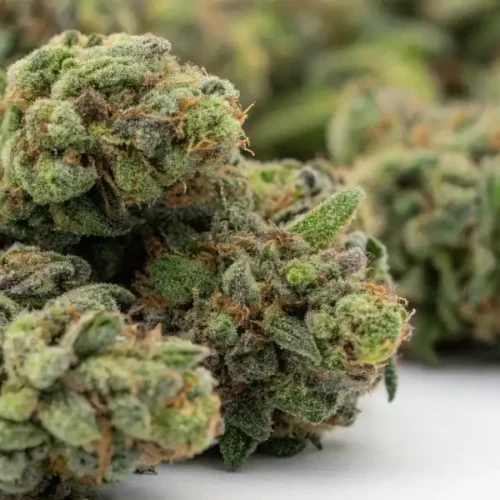
Secondary Metabolites in Cannabis
There’s more to cannabis than meets the eye. Beyond the familiar THC and CBD, cannabis plants produce a complex mix of compounds known as secondary metabolites. These compounds, including terpenes and flavonoids, play a vital role in the plant’s survival and also contribute to the unique effects of different cannabis strains.
Secondary metabolites in cannabis aren’t just there for the plant’s benefit. They offer potential benefits to us as well. From enhancing the effects of cannabinoids to offering their own unique health benefits, these compounds are an essential part of the cannabis experience.
Recommended Strains
Black Jack
 THC: 15% - 19%
THC: 15% - 19% Type of seed: Feminized
Type of seed: Feminized Phenotype: Mostly Indica
Phenotype: Mostly Indica Day to flower: 8 - 10 weeks
Day to flower: 8 - 10 weeks
Black Jack Auto
 THC: 17% - 19%
THC: 17% - 19% Type of seed: Autoflowering
Type of seed: Autoflowering Phenotype: Mostly Sativa
Phenotype: Mostly Sativa Day to flower: 8 - 10 weeks
Day to flower: 8 - 10 weeks
When you’re shopping for cannabis seeds at Blimburn Seeds, you’ll notice that each strain has its own unique mix of these compounds. Knowing these secondary compounds can help you choose the right strain for your needs, whether you’re a first-time buyer or an experienced grower.
Secondary in cannabis benefits span a wide array. They not only enhance the overall experience of cannabis consumption but also have the potential to address various health issues. By recognizing these benefits, you can make informed decisions about which strain to choose and how it might impact your health and well-being.
What are Secondary Metabolites?
Secondary metabolites are compounds produced by plants that don’t play a direct role in growth, development, or reproduction. Instead, they serve other functions like defending the plant from pests or attracting pollinators. In cannabis, these secondary include compounds like terpenes, flavonoids, and minor cannabinoids.
While they may not be necessary for the plant’s survival, these compounds have a big impact on our experience of cannabis. They’re responsible for the unique aroma and flavor of each strain, and they can also influence the effects of cannabinoids like THC and CBD.
The function of secondary is multifaceted. Not only do they contribute to the plant’s defense mechanisms and overall biology, they also play a part in the therapeutic effects that cannabis is known for. Their interaction with the human body’s endocannabinoid system can lead to a variety of effects, making cannabis a versatile plant with many potential uses.
These compounds are vital for the plant’s communication with its environment. The production of these compounds can be influenced by various factors, including the plant’s genetics, its growing conditions, and the presence of pests or diseases. Comprehending these influences can help cultivators optimize the production of these valuable compounds.
The Importance of Terpenes
Terpenes are one of the most important groups of secondary metabolites in cannabis. These compounds are responsible for the unique scent of each strain, from the citrusy aroma of Super Lemon Haze to the piney scent of Jack Herer. But terpenes do more than just smell good. They can also influence the effects of cannabinoids, a phenomenon known as the entourage effect.
For example, limonene, a terpene found in many citrusy strains, is thought to promote relaxation and stress relief. Meanwhile, pinene, which gives strains like Jack Herer their piney aroma, may help counteract the memory impairing effects of THC. By choosing a strain with the right mix of terpenes, you can tailor your cannabis experience to your needs.
The benefits of terpenes in cannabis extend beyond their interaction with cannabinoids. They also have potential therapeutic properties of their own. Research has suggested that terpenes like limonene and pinene may have anti-inflammatory, antioxidant, and even anti-tumor properties. As such, they represent an important area of study for medical cannabis research.
Each cannabis strain has a unique terpene profile that gives it its distinct aroma and flavor. This diversity is one of the reasons why cannabis can offer such a varied range of experiences. Whether you prefer the earthy tones of a Kush strain or the fruity notes of a Haze, you can find a strain that suits your tastes and needs.
Flavonoids and Minor Cannabinoids
Terpenes aren’t the only secondary metabolites in cannabis. Flavonoids, another group of compounds, contribute to the color and flavor of each strain. They also offer their own unique health benefits. For example, cannflavin A and B, two flavonoids unique to cannabis, have been shown to have anti-inflammatory properties.
Minor cannabinoids, like CBG and CBN, are another important group of secondary compounds. While they’re present in much smaller amounts than THC and CBD, they can have potent effects. For example, CBN is thought to have sedative properties, while CBG may have antibacterial and anti-inflammatory effects.
These minor cannabinoids and flavonoids play a key role in the therapeutic potential of cannabis. They can complement the effects of major cannabinoids like THC and CBD, and they also offer unique benefits of their own. As such, they’re an important consideration for anyone interested in the medical use of cannabis.
Research into flavonoids and minor cannabinoids is still in its early stages, but the results so far are promising. These compounds have been linked to a range of health benefits, from anti-inflammatory and antioxidant effects to potential anti-cancer properties. As more research is conducted, we’re likely to uncover even more about the potential of these fascinating compounds.
Promos & Deals
The Importance of Secondary Metabolites in Cannabis Cultivation
Secondary metabolites in cannabis don’t just affect your experience of the plant. They also play an important role in cultivation. These compounds can affect the plant’s resistance to pests and disease, its growth rate, and even its yield.
For example, certain terpenes are thought to deter pests and protect the plant from disease. This can help the plant survive in harsh conditions, and it can also help you keep your cannabis plants healthy and productive. By choosing a strain with a robust terpene profile, like BC Diesel, you can improve the resilience of your crop.
The impacts of these compounds in cannabis cultivation can’t be overstated. These compounds can greatly affect the quality, yield, and resilience of your crop. For example, a strain rich in the terpene myrcene may have a higher resistance to certain pests, potentially leading to a healthier and more productive crop.
These compounds also play an important part in the plant’s adaptability. For example, certain terpenes and flavonoids can help the plant tolerate stressors like drought or high temperatures. Recognizing the importance of these compounds can help cultivators tailor their growing practices to optimize the health and yield of their plants.

Extraction of Secondary Metabolites in Cannabis
There’s a lot of interest in the potential benefits of secondary metabolites in cannabis, especially for medical use. As a result, there’s been a lot of research into how to extract these compounds from the plant. The extraction process can be quite complex, involving solvents, heat, and pressure to separate the compounds from the plant material.
The result is a concentrated extract that contains a high level of secondary. This can be used to make a variety of products, from tinctures and edibles to vape oils and topicals. By using an extract, you can get a potent dose of these beneficial compounds.
The extraction is a process that requires expertise and precision. Various methods can be used, such as CO2 extraction, ethanol extraction, and even cold water extraction. Each method has its own advantages and disadvantages, and the choice of method can greatly affect the quality and composition of the extract.
It’s also important to note that not all extraction methods are created equal when it comes to preserving the integrity of these compounds. Some methods may degrade certain secondary compounds, while others may fail to extract them at all. This is why it’s crucial to use a method that’s suitable for the specific compounds you’re interested in.
Secondary Metabolites in Cannabis for Medical Use
There’s a lot of interest in the potential medical uses of secondary metabolites in cannabis. From anti-inflammatory and antioxidant effects to potential anti-cancer properties, these compounds offer a wide range of potential benefits.
For example, the terpene myrcene, which is found in many strains, has been shown to have anti-inflammatory and pain-relieving effects. Meanwhile, the flavonoid cannflavin A and B have been shown to have potent anti-inflammatory properties.
Cannabis for medical use is gaining increased recognition in the scientific community. The complex interplay between these compounds and our body’s endocannabinoid system opens up a wide range of potential therapeutic applications. Whether it’s the analgesic effects of myrcene, the anti-inflammatory properties of cannflavin A and B, or the potential anti-cancer properties of certain cannabinoids, these compounds have a lot of potential.
It’s important to note, however, that the medical use of these compounds is still a growing field of research. While there’s a lot of promising evidence, much more research is needed to fully understand how these compounds work and how they can be used in a medical context. Nevertheless, the potential is clear, and they represent an exciting area of study in the field of medical cannabis.
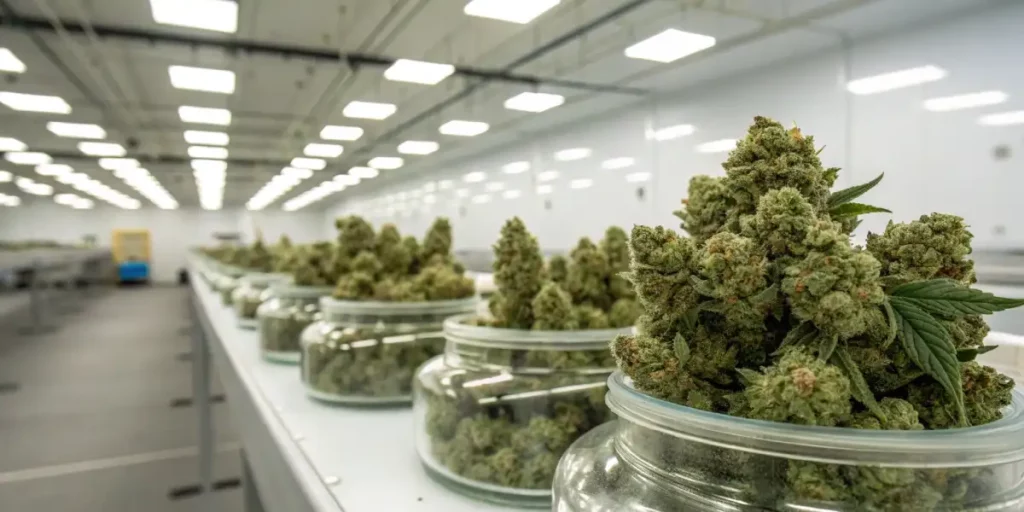
FAQs
What are the benefits of secondary metabolites in cannabis?
Secondary metabolites in cannabis have a wide range of potential benefits. These compounds can enhance the effects of cannabinoids like THC and CBD, contributing to the unique effects of each strain. They also offer their own unique health benefits, from anti-inflammatory and antioxidant effects to potential anti-cancer properties.
For example, the terpene limonene, which is found in many citrusy strains, is thought to promote relaxation and stress relief. Meanwhile, cannflavin A and B, two flavonoids unique to cannabis, have been shown to have anti-inflammatory properties.
Aside from their individual effects, they also contribute to what’s known as the entourage effect. This is the idea that the compounds in cannabis work together, enhancing each other’s effects and offering a more complete range of benefits than any single compound could on its own. This synergy is one of the reasons why cannabis has such a wide range of potential therapeutic applications.
It’s also worth noting that the benefits can vary depending on the specific strain and the individual user. Everyone’s body responds differently to cannabis, and different strains have different profiles. As such, the benefits you experience can depend on a range of factors, making personal experimentation a key part of finding the strain that works best for you.
How do secondary metabolites affect the cultivation of cannabis?
Metabolites in cannabis play an important role in cultivation. Certain terpenes are thought to deter pests and protect the plant from disease, which can help improve the resilience of your crop. They can also affect the plant’s growth rate and yield.
By knowing the secondary in your cannabis strain, you can better tailor your cultivation practices to your plant’s needs. This can help you produce a healthier, more productive crop.
The function of secondary metabolites in cannabis cultivation extends beyond just pest control. These compounds can also affect the plant’s response to its environment. For example, they can help the plant tolerate stressors like heat or drought, potentially improving its resilience and yield. By recognizing these effects, you can tailor your cultivation practices to optimize the health and productivity of your plants.
Secondary can also affect the quality of the final product. For example, they can influence the aroma, flavor, and effects of the cannabis flowers. By choosing a strain with a desirable profile and cultivating it under optimal conditions, you can produce a high-quality crop that meets your specific needs and preferences.
How can I extract secondary metabolites from cannabis?
The extraction of secondary metabolites from cannabis can be a complex process, involving solvents, heat, and pressure. The result is a concentrated extract that contains a high level of these compounds.
However, you don’t need to go through the extraction process to enjoy the benefits of these compounds. Simply smoking or vaporizing the dried flowers can release these compounds, allowing you to experience their effects.
Extraction methods can vary greatly in their efficiency and the quality of the resulting extract. Some methods, like CO2 extraction, can be quite efficient but require specialized equipment. Other methods, like alcohol or oil extraction, can be done at home with basic materials, but may not yield as high a concentration of secondary. Whatever method you choose, it’s important to do your research and ensure that you’re using a safe and effective method.
If you’re interested in the extraction of secondary metabolites in cannabis for medical use, it’s important to note that the composition of the extract can vary depending on the extraction method used. Some methods may extract a wider range of compounds than others, potentially leading to different effects. As such, it’s worth consulting with a knowledgeable professional or doing your own research to ensure that you’re getting an extract that meets your needs.
Can I use secondary metabolites in cannabis for medical purposes?
There’s a lot of interest in the potential medical uses of secondary metabolites in cannabis. These compounds offer a wide range of potential benefits, from anti-inflammatory and antioxidant effects to potential anti-cancer properties. While research is still ongoing, choosing a strain with a robust profile of these compounds can maximize the potential benefits.
For example, the flavonoids cannflavin A and B have been shown to have potent anti-inflammatory properties. Meanwhile, the minor cannabinoid CBG may have antibacterial and anti-inflammatory effects.
It’s important to note that the use of cannabis for medical purposes should always be done under the guidance of a healthcare professional. While these compounds have a lot of potential, they can also interact with other medications and have side effects. As such, it’s crucial to discuss any plans to use cannabis for medical purposes with your healthcare provider.
Furthermore, research into the medical uses of these compounds is still in its early stages. While there’s a lot of promising evidence, much more research is needed to fully understand how these compounds work and how they can be used in a medical context. Nevertheless, the potential of these compounds for medical use is clear, and they represent an exciting area of study in the field of medical cannabis.
Which strains are rich in secondary metabolites?
Different cannabis strains have different profiles of secondary. When you’re shopping at Blimburn Seeds, you can find information about the terpene profile of each strain. This can help you choose a strain with the right mix of secondary for your needs.
For example, if you’re looking for a strain with anti-inflammatory properties, you might choose a strain rich in cannflavin A and B, like Sour Diesel. Or, if you’re looking for something relaxing, you might choose a strain with a high level of limonene, like Super Lemon Haze.
It’s also worth noting that the profile of secondary metabolites in a cannabis strain can be influenced by a variety of factors, including the strain’s genetics and its growing conditions. As such, the profile of a given strain can vary from one crop to another. By knowing these factors, you can choose a strain that’s likely to produce the effects you’re looking for.
Finally, it’s important to remember that everyone’s body responds differently to cannabis. What works well for one person may not work as well for another. As such, finding the right strain often involves a bit of trial and error. By experimenting with different strains and observing their effects, you can find the strain that works best for you.

